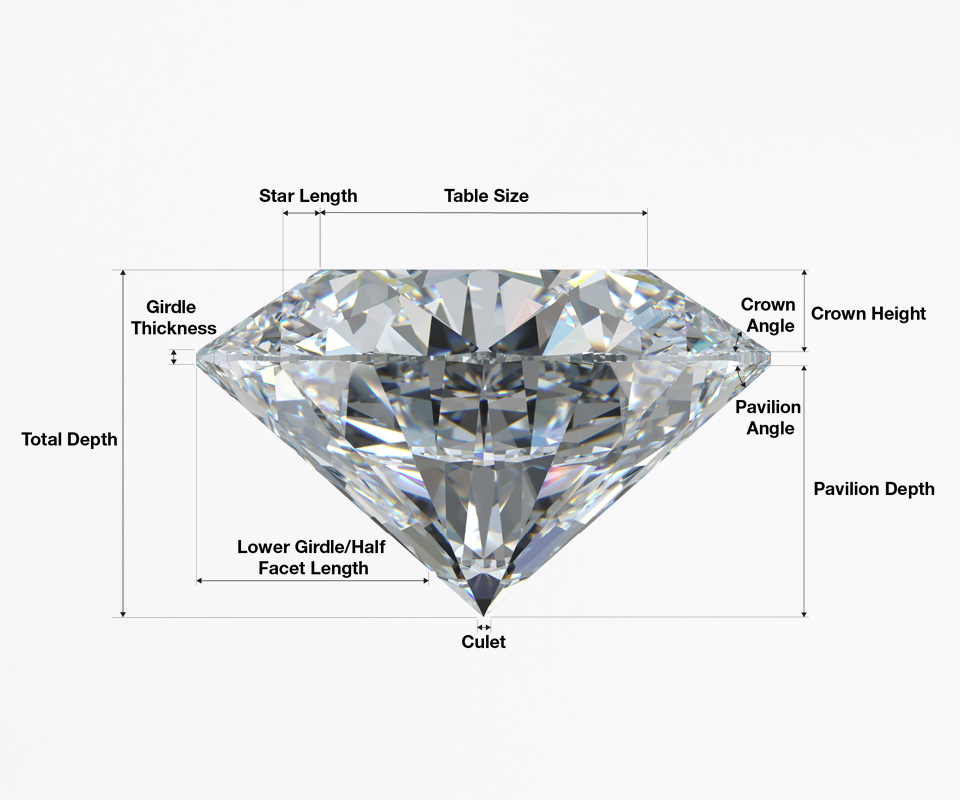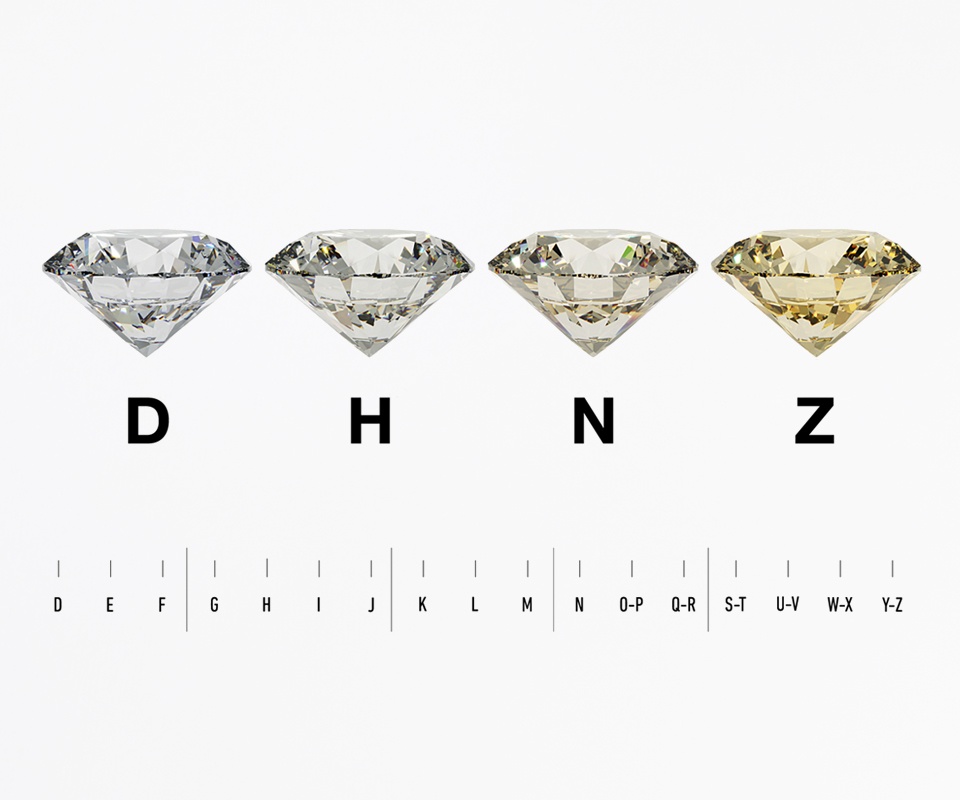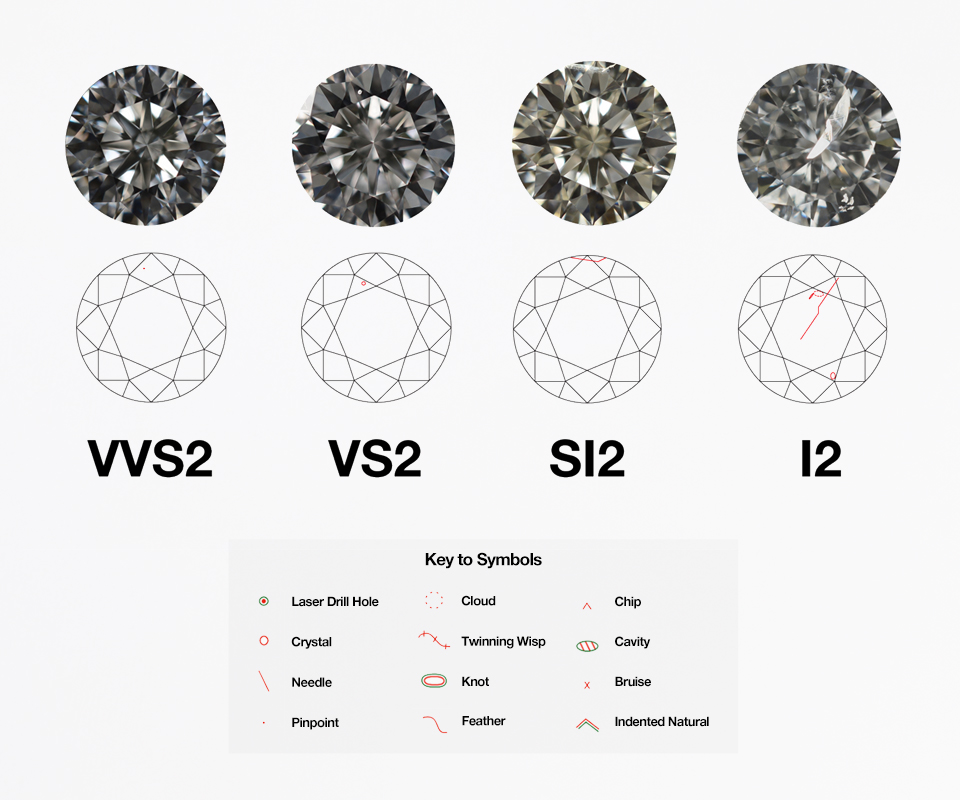When buying a diamond—whether it's for an engagement ring, a gift, or an investment—it’s easy to get overwhelmed by the sparkle. But behind every dazzling gem lies a precise science that defines its beauty and value. That’s where the 4Cs come in.
Developed by the Gemological Institute of America (GIA), the 4Cs—Cut, Colour, Clarity, and Carat Weight—are the universal standard for assessing diamond quality. Knowing these can empower you to make informed choices and select a diamond that’s not just beautiful, but also worth your money.
As many diamonds as there are, there are just as many setting designs. Like the variants of size and cut, the setting can change the presentation of a diamond. Knowing your partner’s style is the best way to choose the setting of their dreams.
Solitaire: A single stone, prongs allow the diamond to catch the most light.
Sidestones: Diamonds or gemstones flank the main stone for additional sparkle or colour.
Three Stone: One diamond for the past, one for the present, and one for the future.
Halo: A single stone surrounded by tiny diamonds to add sparkle and the illusion of greater size.
Of all the 4Cs, cut has the greatest impact on a diamond’s brilliance and overall appearance. It refers not to a diamond’s shape (like round or oval), but how well the diamond’s facets interact with light. Diamond cut grades are only given to round brilliant cut diamonds because they are the only cut that have standardised facets.
All other shapes are referred to as fancy shapes, which include marquise, emerald, pear, oval, heart and even triangle cuts.
Cut is also where the artisanal craftsmanship of an expert comes in. Did you know that most people wouldn’t even recognise a rough diamond? It isn’t until a diamond is cut, that the real beauty of a diamond begins to take shape.
A well-cut diamond reflects light internally from one facet to another and then disperses it through the top—creating that iconic sparkle. GIA grades cut quality for round brilliant diamonds from Excellent to Poor, based on:
Proportions
Symmetry
Polish
Light performance
Brightness: The total internal and external reflection of white light.
Fire: The dispersion of light into the colours of the spectrum.
Scintillation: The pattern of light and dark areas, and the sparkle when moved.
A poorly cut diamond can appear dull, even if it has perfect colour and clarity.
The major components of a standard round brilliant, from top to bottom, are crown, girdle, and pavilion. Every round brilliant cut diamond has 57 or 58 facets, the 58th being a tiny flat facet at the bottom of the pavilion that’s known as the culet. The large, flat facet on the top is the table.

While most diamonds may appear white, they can actually have subtle hints of yellow or brown. The GIA Colour Scale ranges from D (colourless) to Z (light yellow or brown). The closer a diamond is to D, the rarer—and more expensive—it becomes. Often when we talk about diamond colour, we are actually talking about the absence of colour. Colour variations from the most obvious to subdued can drastically alter diamond quality and price.
Diamonds actually come in a variety of hues, from colourless to yellow, grey, brown and nearly every shade of the rainbow. Luckily, diamond colour isn’t a matter of opinion—proper colour evaluation is a matter of expertise.
The correct way to evaluate diamond colour is in precise conditions, under controlled lighting, where stones are compared to masterstones with established colour grades.
However, colour differences are often so subtle that they can only be distinguished under controlled lighting by a trained eye. For buyers, that means:

D–F: Colourless (rare and highly valuable)
G–J: Near Colourless (excellent value)
K–Z: Noticeable colour presence
Tip: Setting a slightly tinted diamond in yellow or rose gold can mask the colour and still give a stunning look.

Clarity is all about what’s inside (and on the surface) of your diamond. Most diamonds contain tiny imperfections known as inclusions (internal) or blemishes (external)—nature’s fingerprints, if you will.
The GIA Clarity Scale ranges from:
Flawless (FL): No inclusions or blemishes under 10x magnification
Internally Flawless (IF)
Very Very Slightly Included (VVS1 and VVS2)
Very Slightly Included (VS1 and VS2)
Slightly Included (SI1 and SI2)
Included (I1, I2, I3): May affect transparency and brilliance

Most inclusions are microscopic and have no impact on the beauty to the naked eye, making VS and SI grades great budget-friendly options.
Carat refers to a diamond’s weight, not its physical size. One carat equals 200 milligrams, and each carat is divided into 100 points. For example, a 0.50 carat diamond is 50 points.
But don’t be fooled: a heavier diamond isn’t always a bigger-looking one. Cut plays a huge role in how large a diamond appears. Two diamonds of the same carat weight can look dramatically different depending on how they’re cut.
A well-cut 0.90ct diamond can look larger than a poorly cut 1.00ct diamond—and it may save you money!
The magic of the 4Cs lies in balance. You don’t need to aim for perfection in every category. Instead:
Prioritise cut for brilliance.
Choose a colour that complements your setting.
Opt for clarity that’s eye-clean.
Pick a carat weight that suits your style and budget.
And remember: always ask for a GIA Grading Report to ensure you’re getting exactly what you’re paying for.